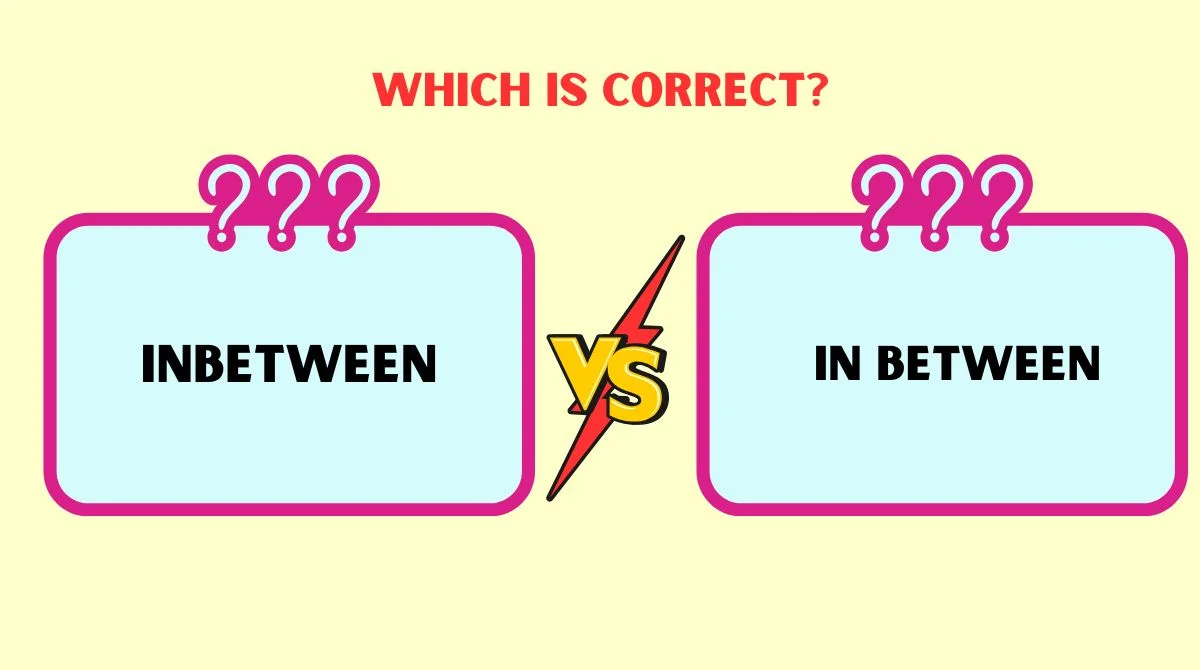Have you ever paused while reading or writing and wondered: is it inbetween, in-between, or in between? English can be tricky, and this small phrase often trips up writers and readers alike.
In this article, we’ll explore everything you need to know about these variations, including proper usage, common mistakes, and practical tips to make your writing accurate and professional.
Understanding the Basics
At first glance, inbetween, in-between, and in between may seem identical. However, their usage differs depending on grammar rules and context. Knowing which form to use is crucial for clarity and professionalism in your writing.
- Inbetween: Often seen in informal writing, but rarely recognized in dictionaries.
- In-Between: Correct when used as a compound adjective.
- In Between: Standard, widely accepted, used as a preposition or noun phrase.
English evolves constantly, and small words like this can have multiple acceptable forms. The key is understanding function and context.
What “Inbetween” Means and Why It Appears
Inbetween is typically used as one word in casual or online writing. People write it when they want a quick, seamless form.
Why does it appear in writing?
- Typing habits and autocorrect suggestions.
- Misunderstanding hyphenation rules.
- Influence from other informal sources like blogs, social media, or texting.
Fact: Most dictionaries, including Oxford and Merriam-Webster, do not list “inbetween” as a standard form. Using it in formal writing can be considered incorrect.
Example (informal usage):
“I was stuck inbetween jobs for a few months.”
Corrected version:
“I was stuck in between jobs for a few months.”
Breaking Down “In Between”
The standard two-word form, in between, is widely recognized and accepted.
Grammatical roles:
- Preposition: Shows location or position.
- Noun phrase: Refers to a middle state or condition.
Examples:
- Preposition: “The sofa is in between the table and the window.”
- Noun phrase: “There’s an in between that’s hard to describe.”
It’s versatile, easy to read, and works in almost any context.
Hyphenation: “In-Between”
Using a hyphen is correct when in-between acts as an adjective.
Rules for hyphenation:
- Use in-between before a noun to describe something in the middle.
- Do not hyphenate if used as a preposition.
Examples:
- Correct (adjective): “She is going through an in-between stage in her career.”
- Incorrect: “She is stuck in-between two options.” (should be in between)
Tip: When in doubt, ask: “Am I describing a noun?” If yes, hyphenate.
Common Usage Questions
Here are some frequently asked concerns regarding these forms:
- Is “inbetween” one word or two?
Technically two words are correct. One word is informal. - Why the confusion?
English allows hyphenation for adjectives, but many online sources skip rules. - When to use “in between” without a hyphen?
As a preposition or noun phrase: “He sat in between his friends.” - When to use “in-between” with a hyphen?
As an adjective before a noun: “This is an in-between solution.”
Comparing All Three Variations
To make this crystal clear, here’s a side-by-side comparison:
| Form | Grammar Role | Correct Usage Example | Notes |
|---|---|---|---|
| Inbetween | Informal/incorrect | “He was inbetween jobs.” | Rarely recognized in dictionaries |
| In-Between | Compound adjective | “She is in an in-between stage of life.” | Hyphenated before nouns |
| In Between | Preposition/noun phrase | “The sofa is in between the chairs.” | Standard, widely accepted |
This table helps you instantly pick the correct form for any context.
Common Errors and Their Impact
Writers often make these mistakes:
- Using inbetween in formal writing.
- Hyphenating unnecessarily.
- Confusing adjectives and prepositions.
Impact:
- Confuses readers.
- Reduces credibility in professional writing.
- Can affect search engine optimization if writing online.
Example:
Incorrect: “She is inbetween two cities for work.”
Correct: “She is in between two cities for work.”
Even small errors can make content look sloppy.
Tips for Writers
- Rule of thumb: Use in between unless describing a noun.
- Hyphenate only when it’s a compound adjective before a noun.
- Avoid “inbetween” in formal writing.
- Read out loud to check flow. If it feels off, adjust the form.
Quick Memory Aid:
- Preposition? → Two words (in between)
- Adjective? → Hyphen (in-between)
- Informal shortcut? → Only in casual, online writing (inbetween)
Everyday Usage Examples
Correct Usage:
- “He felt lost in between decisions.”
- “She bought an in-between size dress.”
- “The coffee shop is in between the bank and the library.”
Incorrect Usage:
- “He is inbetween jobs.” (should be in between)
- “This is an inbetween period.” (should be in-between period)
Frequently Asked Questions
Is “inbetween” ever correct?
Only in casual writing or informal contexts. Avoid it in professional and academic texts.
Can “in-between” be used as a noun?
No, it’s strictly an adjective. Use in between for noun usage.
Do dictionaries list “inbetween”?
Most standard dictionaries do not list it. Use the two-word form instead.
When should I hyphenate “in-between”?
Hyphenate when describing a noun: “an in-between stage,” “an in-between size.”
How to remember which form to use?
Ask: “Am I describing a noun (adjective) or showing position (preposition)?” Adjective → hyphen. Preposition → two words.
Conclusion
Choosing between inbetween, in-between, and in between doesn’t have to be confusing. Remember:
- Use “in between” for prepositions or nouns.
- Use “in-between” when it’s a compound adjective.
- Avoid “inbetween” in formal writing.
By applying these rules, your writing becomes cleaner, clearer, and more professional. Mastering small details like this can significantly enhance your credibility and ensure your text reads smoothly.
